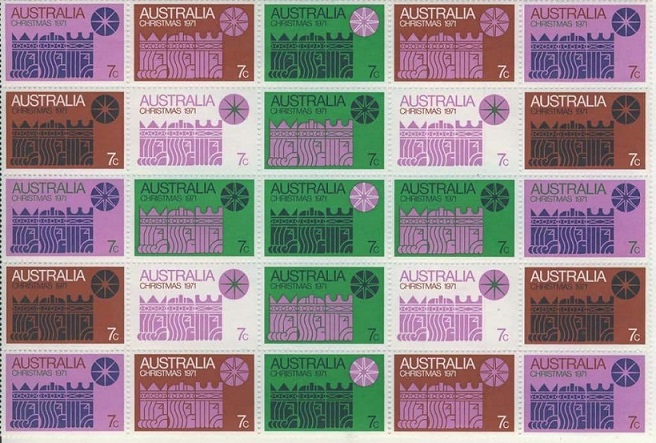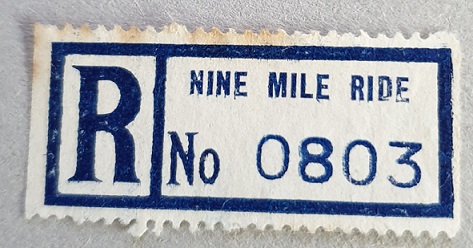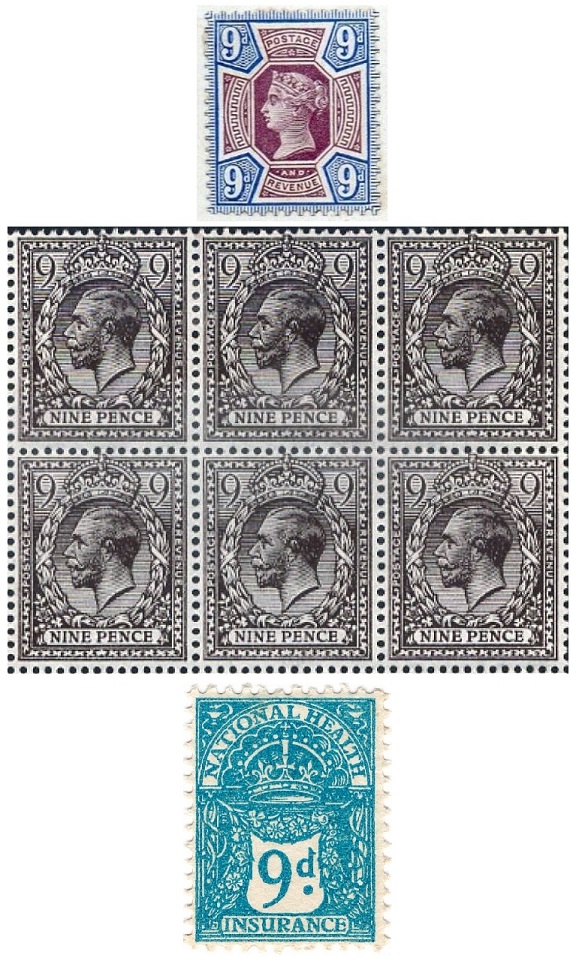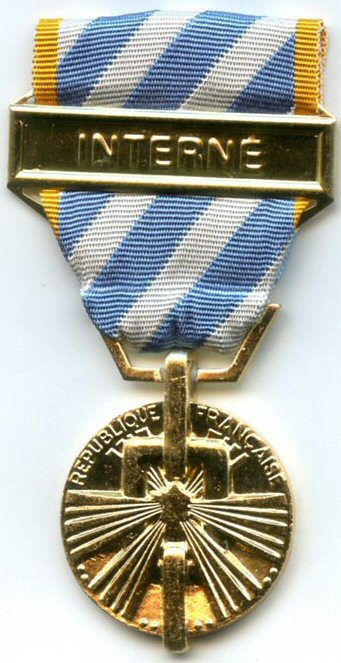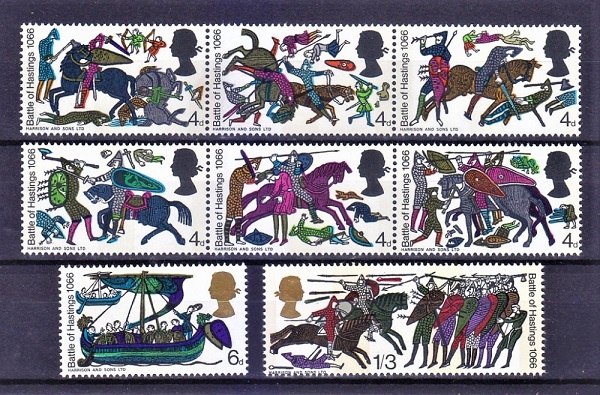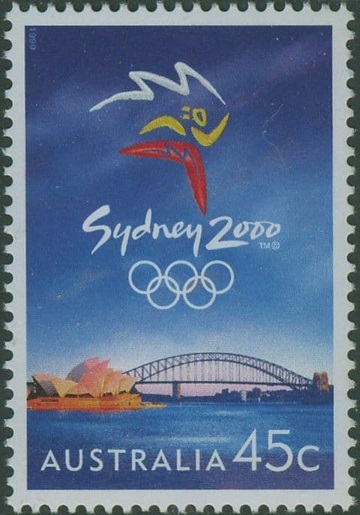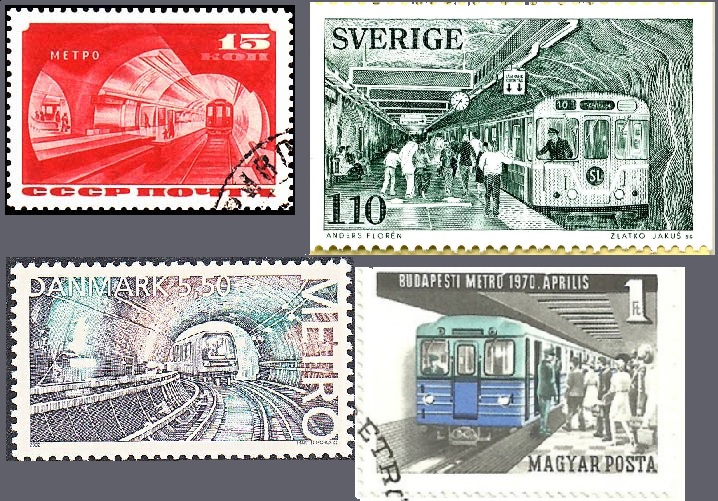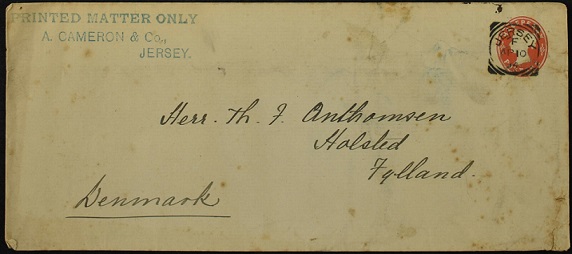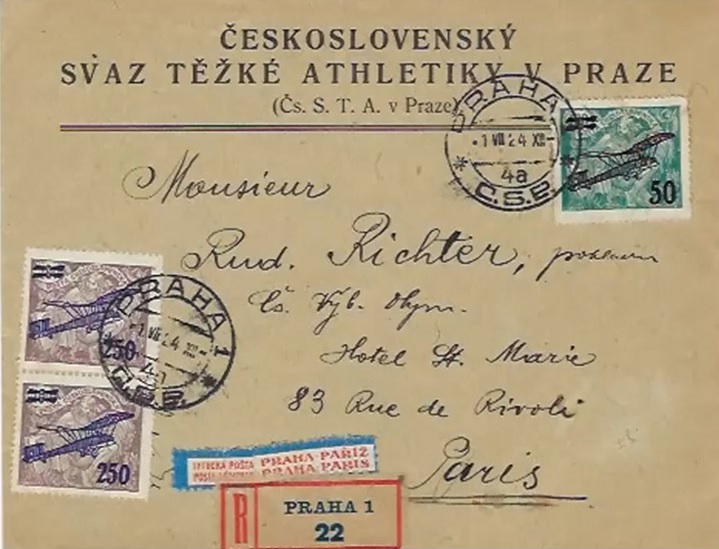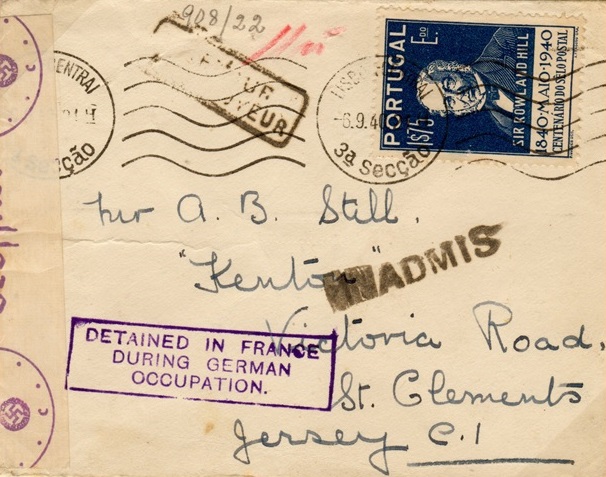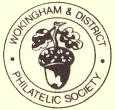
News Archive: 2021 |
|
14th December 2021 - Seasonal Displays and Christmas Social
A select group of 10 members gathered for the Christmas meeting. Apologies were received from Alwyn Lowe, who had done much organising "behind the scenes". Three members gave displays:
Trevor Cornford brought a display with the Christmas flavour coming from Antarctica. He was delighted to announce that he has been chosen to go on the Shackleton 100th Anniversary Voyage next year. He told the story of a chest belonging to Henry Robertson Bowers (1883-1912, a member of Scott's Expedition) who had left a chest of material to a Polar Society Member. That chest is now at the Polar Museum in the Scott Polar Research Institute. Trevor completed his display with an 1835 letter from Scotland to the East India Company.
9th November 2021 - The Number "9"
Nine members gathered on 9th November to look at displays of stamps and postal history on the broad subject of the number 9.
Derek Steele showed us an 1812 entire from Glasgow to Campbelltown (a distance of 140 miles) posted for 9d (the rate at the time for between 120 and 170 miles), an 1828 entire from Lockerbie to Edinburgh with a manuscript 9½ paid marking (the rate at the time being 9d for the distance of between 80 and 120 miles plus the Scottish Additional Halfpenny Mail Tax), and a 1937 airmail letter from Waipukurau, New Zealand to New Zealand House, London, franked by two 9d stamps.
Mark's display continued with a look at the strip of five 9p stamps featuring British Wildlife, specifically Hedgehog, Hare, Red Squirrel, Otter, and Badger, issued in October 1977. Mark completed his display with 12 British 9p stamps issued between November 1977 and July 1979.
The title of the display by Trevor Cornford was All the Nines, Here, There and Everywhere. It was of Antarctica material and included items relating to Shackleton.
Michael's display continued with usage of the Queen Victoria 9d Jubilee stamp on a parcel post label, the King George V 9d agate stamp in multiple blocks, a 9d turquoise National Health Insurance stamp issued in 1920, a selection of Commonwealth fiscal stamps denominated 9d or 9s, and a 9d Queen Elizabeth II Wilding stamp used as a postage due label.
Roger Sammons showed sheetlets of 9 stamps from a number of places, including Austria (1000 years of Austria, issued in 1976), Yugoslavia (issues from 1969, 1970, 1971, 1985, and 1986), Guernsey (10p and 25p 1976 Europa stamps), Comoro Islands, and the Isle of Man (1976 and 1987 Europa issues).
Roger completed his display with 2 sheetlets of 9 stamps from São Tomé e Príncipe, the stamps having been issued to commemorate Ludwig van Beethoven (1770-1827) overprinted for the marriage of Prince Charles and Lady Diana Spencer in 1981. One sheetlet had the overprint in gold, the other in white.
26th October 2021 - Civilians interned in France during WWII - Richard Berry FRPSL Twelve members and two guests were entertained by one of the current Honorary Assistant Secretaries of the Royal Philatelic Society London, Richard Berry, with his display on the subject of civilians interned in France during WWII. The display began and ended with a medal. It told the story of Sidney Coleman and his wife Florence. At the start of the First World War, Sidney was the secretary of the YMCA in Paris, and he was exempt from Military Service. Richard showed some examples of paperwork relating to Sidney being allowed to go around France in civvies during WW1! After the war he joined the Paris police, and the display included Sidney's police armband (the original)! After the fall of France in 1940 all civilians in the occupied zone with British connections through birth, marriage, etc. were rounded up. Sidney was in the first tranche from the Paris area. and he was sent to the camp that held males initially at Fresnes and then at St Denis in the Paris suburbs. Richard showed a range of menus, photos and correspondence, including the discovery copy of Censor 9 handstamp used to censor the letters and postcards written in Polish. Throughout the war Sidney maintained a correspondence with a French friend in a Stalag PoW camp and examples of this correspondence were shown. In late 1941 Florence was rounded up and sent to the family camp based in the hotel complex at the spa town of Vittel (famous for its mineral water) in north east France. Interniertenlager (Ilag or internment camp) Vittel belonged to the complex of German POW camps designated Frontstalag 194. It was commanded by Captain Otto Landhauser of the German army. Vittel differed significantly from other camps in terms of living conditions, however. It consisted of a variety of hotels and a large park, all surrounded by barbed wire and constantly patrolled by armed guards. The hotels, where the prisoners lived and did their own cooking, had heat and running water. Richard showed correspondence between the Colemans and also material relating to other camp inmates including ephemera. Florence and Sidney's daughters being under 16 were not interned; instead they had to reside with friends.
Initially the Germans had intended to incarcerate women and families in Germany but they decided not to when the British threatened to move German Internees on the Isle of Man to remote Canada. The internees therefore were housed at filthy accommodation at Besançon in Eastern France before being moved to Vittel. Richard showed a study of the relevant camp cachets, of which he had formed a good and well-explained collection. He explained that there is a reference book on the camps compiled by Roger Horton who lived in Belgium and was himself interned in Germany. Richard has broadened the scope of his display to include information about other camps for internees and which nationalities were resident in them. He showed details of camps for Spanish Republicans, Austrians and Americans. In total there were 250 Internment camps of varying sizes in France. Eventually British civilians in the unoccupied part of France were also rounded up. The Italians had territorial ambitions to annex parts of Southern France and occupied Monaco and the surrounding area. British civilians from the area were sent to a camp at Sospel. Internees in the camps were creative and we were shown a number of Christmas Cards, including one from Sidney to Florence. Florence was released in 1942 because of her age (60), but her movements were restricted and she could not, for example, own a radio or be out after dark! She continued to write to her husband until his camp was liberated by the Americans in 1944. Richard showed some examples of poetry written by Florence whilst in Vittel which told of some of the conditions they were incarcerated under during the harsh snowy winter of 1941. Richard displayed a number of Red Cross items that came from Vittel and explained the role of the Red Cross there looking after the interests of internees. Richard also showed reports of Red Cross visits (to Vittel and St Denis) as reported in contemporary prisoner of war newspapers. There were over 500 nuns interned in Vittel who had been removed from various convents and they were often used to provide nursing services to the sick in the camp. This was followed by a range of letters, postcards and Air Letters from Sidney, and other ephemera, including entertainment programmes, sporting news, and Christmas Cards from the camp. Sidney was a regular contributor to the camp newsletter. Of note was Sidney's prison identification card, his prison armband, his photo in a POW magazine and his room key fob. Next came a further range of letters to Sidney from his relations in the UK, some of which bore previously unrecorded cachets and some of which had been subject to a chemical wash to check for hidden messages. After liberation Sidney worked for the US Army as a translator and investigator for five years. He was also involved in investigations of the notorious German atrocity at Oradour sur Glane and the Buchenwald and Neuengamme camps. Florence Coleman died in 1947. The talk had started with Sidney's school attendance medal awarded in Stratford, London and ended with the Political Internee medal he was awarded by the French state.
12th October 2021 - Impromptu Chairman's Display
The meeting was scheduled to be "A Jubilee Reminiscence" presented by John Davies, who had recently been awarded "Best in Show" at Autumn Stampex 2021 and received the Silver Mailcoach. Sadly, John had tested positive for Covid and was unable to visit Wokingham. Instead, Patrick Reid gave an "Impromptu Chairman's Display".
The third section covered the items issued in the build up to the Sydney Olympic Games that was held in 2000. Again this was from Christine's collection. It began with two booklets issued by Monaco when Sydney was awarded the games and covered the various items issued by Australia Post: Postal envelopes, Slogan Cancels, Aerogrammes; the handover from Atlanta of the Olympic flag and reminders of past Olympic successes through to the Olympic Opening Ceremony and special stamps issued for Australian Gold Medal winners.
The final section of the first part was similar to the first but covering the Tax Markings of South Australia including the discovery copy of a 13⅓ centime "home-made" tax marking.
The final section was a one-frame exhibit that had recently been exhibited (virtually) in South Africa where it was awarded a Large Vermeil medal. It showed the short-lived tax markings of Victoria, Australia between 1947 and 1954. Many of the items were the only recorded examples and it had taken 12 years to accumulate enough material for one frame.
21st September 2021 - Members Meeting, with the main theme of Transport
A select group of eight members and one guest gathered for our first regular meeting of the new season, for which the general topic was transport.
Mark Bailey followed with a display split into Air, Land and Sea. The Air section was represented by Concorde, with a range of covers including the First Flight from London to New York and a passenger certificate for his own supersonic experience flight and a card signed by the flight crew. Land was represented by the Liverpool and Manchester Railway, including some customised covers made by sticking cards onto Isle of Man envelopes and some North Western Postal Board cards showing various routes. Finally, sea was represented by the Queen Elizabeth II, including voyages for the Falklands War and a cover signed by representatives of seven of the families that make up the population of Tristan da Cunha.
To complete the display in the first part of the evening, Patrick Reid displayed Tasmanian Railway Newspaper stamps, including two scarce part wrappers, followed by examples of all the sets of Railway Parcel Stamps up to the final issue in 1956. Use on cover is difficult, but he showed the lid of a crate (used to hold bottles of oil) with 3 of the 1/6d stamps on it.
The final display, given by Mark Bailey, was unashamedly nothing to do with transport. He traced the life of George Patrick Campbell who left England to live in Tours, France where he was a Wine Merchant. His hobby was stamp collecting and he specialised in Postal Cards. In 1875 he joined the Philatelic Society, London and the Société Française de Timbrologie. In 1880 he moved to Paris and in 1887 he moved to Jersey. He managed to be appointed as the Colombian Consul in Jersey. In 1891 he began a stamp dealing business, trading as A. Cameron & Co. He was left on his own when his wife moved back to Paris, so he moved to a smaller house. Sadly, he died from an accidental overdose of morphine in 1903. Throughout his life he corresponded with many leading philatelists of the time, and he sent his wholesale and retail lists in newspaper wrappers and long, thin envelopes at Printed Matter rate. Mark showed an impressive array of these to many different addresses in many countries. The lists were printed with a line on the back to show where they could be folded to fit into the envelopes.
Patrick Reid thanked all who had attended, and especially the presenters who had entertained us with a wide variety of material. 7th September 2021 - Czechoslovakia Air Mails to 1939 - held via Zoom Lindy Bosworth FRPSL gave a presentation using Zoom video conferencing.
The development of the air mails was explained, with numerous examples of mail carried by the services operated by the airlines. This included mail carried in various types of fixed wing aircraft and also mail delivered by airships.
A video recording of the presentation can be viewed here. 10th August 2021 - A Quick Descent Through Parachuting - held via Zoom As part of the Society's programme, members were pleased to invite Barry Stagg to give a presentation using Zoom video conferencing.
Barry then showed the use of parachutes in connection with manned and unmanned spaceflight, the dropping of mail and supplies by parachute, modern parachuting entertainment, and parachuting as a sport including in competitions, and he finished his presentation by looking at the subject of BASE jumping.
The meeting concluded with the Society's President, Mark Bailey, making a short presentation of some other parachuting-related items, including postcards, cartoons and humorous cards. A video recording of the presentations can be viewed here. 22nd June 2021 - Non-English Language Stamps - held via Zoom A number of members participated in this meeting, showing stamps that were in languages other than English.
Alwyn Lowe showed a range of post-war Austrian stamps, including the long pictorial set issued from 1947, POW Relief Fund stamps (with rather stark images), surtaxed pictorial stamps featuring flowers issued in 1948 to benefit Anti-Tuberculosis work, and other fund raising issues. He ended with the costumes set, issued after currency revaluation. The general opinion was that most were attractive stamps.
Ron Jones began with a series of United Nations transport-themed stamps issued in French and German, and then showed a range of Polish material. This included the Culture/Dress issue, Kraków, the European Capital of Culture 2000 issue, and various stamps depicting buildings, including church architecture and World Heritage sites.
Mark Bailey showed Greek stamps issued for the 50th Anniversary of the Battle of Crete, which was the first ever airborne invasion. Staying on a similar theme he showed stamps from the Netherlands issued for the 40th Anniversary of the 1945 Liberation, followed by an earlier issue for the 25th Anniversary that featured the "V for Victory". The same stamp was re-used in August the same year to commemorate the Victory over Japan, when the Netherlands Indies were liberated and he also showed stamps for the 35th Anniversary of this event.
On a different subject entirely Mark then showed Dutch stamps relating to birds and the land, including surcharged Summer Stamps from 1961. The surcharge supported a social and cultural fund. Moving on to the Dutch Polder system, he explained how they were managed and showed a Polder stamp. He concluded with stamps and postmarks from the islands in the Wadden Sea.
Many of the cards were light-hearted commentary on the difficulties of saying or writing the full place name. The members all had fun finding spelling errors on some of the postcards.
25th May 2021 - Postal History of the 1982 Falkland Islands Conflict - held via Zoom Although the Society was still unable to hold any physical meetings, members were pleased to invite once again Gerald Marriner FRPSL to give a presentation using Zoom video conferencing.
In his vote of thanks, President Mark Bailey commented that he found the talk most interesting, and thanked Gerald for having shown such a diverse range of material, including numerous items that are difficult to find, many of which provide a very personal insight into the circumstances of the war in the Falkland Islands. A video recording of Gerald's talk can be viewed here.
27th April 2021 - United Kingdom Post Offices, and the use of With the Society still unable to hold any physical meetings, members were entertained and educated by Alastair Nixon talking about UK Post Offices and our President, Mark Bailey FRPSL, talking about the Aphengescope and its use for philatelic displays in the period of 1900-1910. Alastair introduced his talk with a brief survey of key historical dates from the opening of the King's Mails to the public in 1635, the establishment of the General Post Office in 1660, the first Mail Coach in 1784, the introduction of the Penny Post from 10th January 1840 and the first Post Box (in Jersey) in 1852. He explained how the GPO evolved to become Parcel Force International, Royal Mail and Post Office Limited that we are familiar with today. Alastair explained that Post Offices are classified into three basic types, within which there are sub-types: Large Post Offices comprise Branch and Main Offices, Medium comprise various types of Local Post Office, and Small includes Mobile and other "Pop-up" types of offices. There has been a rapid decline in the number of Branch offices from 375 in 2013 to 113 now. Many have become "Corporate Franchise" offices such as Wokingham's Post Office located in a branch of W.H. Smith. Alastair noted that Post Boxes are located by Royal Mail at sites that suit their pick-up runs. Alastair read extracts from Parliamentary debates that showed that the apparent "Consultation" on Branch closure and relocation was a sham. His talk included local examples of office types: Finchampstead is a Main Office (in a shop, with the full range of services), and Crowthorne is a Town sub-office. 43% of Post Offices are "locals", which offer a reduced range of services - no parcels, no licences, etc. There are a number of types of Small office and Alastair explained what they are. He showed photographs of the Warborough Mobile office that has a retractable wheelchair ramp for access. There are a number of Outreach offices hosted in local halls and in partner shops. There is currently a pilot scheme to offer services in former bank branches. There are currently about 11,600 Post offices with opening times between ten minutes and 112 hours per week. 93% of the population live within 1 mile of a post office and 99% within 3 miles. There are seven post offices, such as the House of Commons, not open to the general public. Alastair closed his talk with references to the recent Horizon system scandal, a mention of TPO Open Days at the Didcot Railway Centre, Post Offices on stamps and promotional material, the Mail Rail system under London and the Special Purpose North Pole Post Office for Santa's mail, and a special postmark offered by Lover near Salisbury each Valentine's day. A video recording of Alastair's talk can be viewed here. Introducing his presentation, Mark Bailey explained that he had found a reference to the use of an Aphengescope in a presentation by W B Avery when searching the records of meetings of the Philatelic Society, London (before it was the Royal). He explained that Avery was from the family that owned W & T Avery, manufacturers of scales and weighing machines. William Beilby Avery had been Managing Director and retired in 1891, and he also held other directorships. He lived at Apsley House, Birmingham, and also maintained a house at Portland Place, London, and had Oakley Court at Bray, near Windsor (now a hotel) that he used for entertaining guests on day outings from London. He was a distinguished collector and died in 1908. Avery was created an RDP in 1921, being named as one of the "Fathers of Philately". Mark explained the scale and scope of Avery's collection and some of the choice rarities including mint 1d and 2d Mauritius Post Office examples. Mark then turned to the aphengescope, invented by Leonhard Euler, the physicist and mathematician, around 1756. It projected an image of a solid object by reflection. Mark explained the difference between an episcope (for opaque, flat objects) and an epidiascope (for slides or transparencies and opaque objects) and that an aphengescope was an episcope. He summarised the development and the production of a patented device by Krüss of Germany. A key characteristic of aphengescopes was the use of two lanterns to provide a good amount of light for projecting large images. Mark noted that hobby magazines in the 1880s gave instruction on "How to build your own Aphengescope". An aphengescope was used regularly at the Birmingham Philatelic Society by John Arthur Margoschis between 1902 and 1910. The Philatelic Society, London only used one a couple of times and never took up a suggestion to use it for the work of the Expert Committee to help identify forgeries, etc. In closing, Mark illustrated the advantages of an aphengescope over the traditional Magic Lantern and explained the etymology of the word. A video recording of Mark's talk can be viewed here. Our Chairman Patrick Reid thanked both speakers for fascinating and informative displays, both of which were out of the normal run of things.
23rd March 2021 - Disruption to Mail Services during the German Occupation With the Society still unable to hold any physical meetings, members were entertained by Gerald Marriner FRPSL with a very interesting presentation on the impact on mail services during the German occupation of the Channel Islands, in a talk using Zoom video conferencing.
British stamps were still valid for postage throughout this period. However, when stocks ran out, locally printed stamps were issued. Gerald's presentation was in 4 sections:
In his vote of thanks, Chairman Patrick Reid commented that he found the talk most instructive, and very interesting from many points of view. He noted that Gerald had put in a lot of work to establish the tortuous routes that the mail followed. Patrick also remarked on the assumptions that people had made at the time about when the postal services might be available, and the strange disconnects that existed when parts of Europe had been liberated but the Channel Islands were still occupied.
A video recording of Gerald's talk can be viewed here. 23rd February 2021 - Mail between GB and Belgium 1574-1875 - held via Zoom With the Society unable to hold any physical meetings at this time, the Society was entertained by John Soer with an excellent selection of Belgian Postal History covering the period 1574 to 1875, in a talk using Zoom video conferencing. 26th January 2021 - The Tattersall Story - held via Zoom With the Society unable to hold any physical meetings at this time, the meeting in January featured our Chairman Patrick Reid FRPSL presenting the story of Tattersall's Lottery in Australia, established by George Adams in the late 19th century. |
|
Copyright © 2021 Wokingham & District Philatelic Society Webmaster: Mark Bailey WDPSWebmaster@hotmail.co.uk Last Updated: 21 December 2021 |
